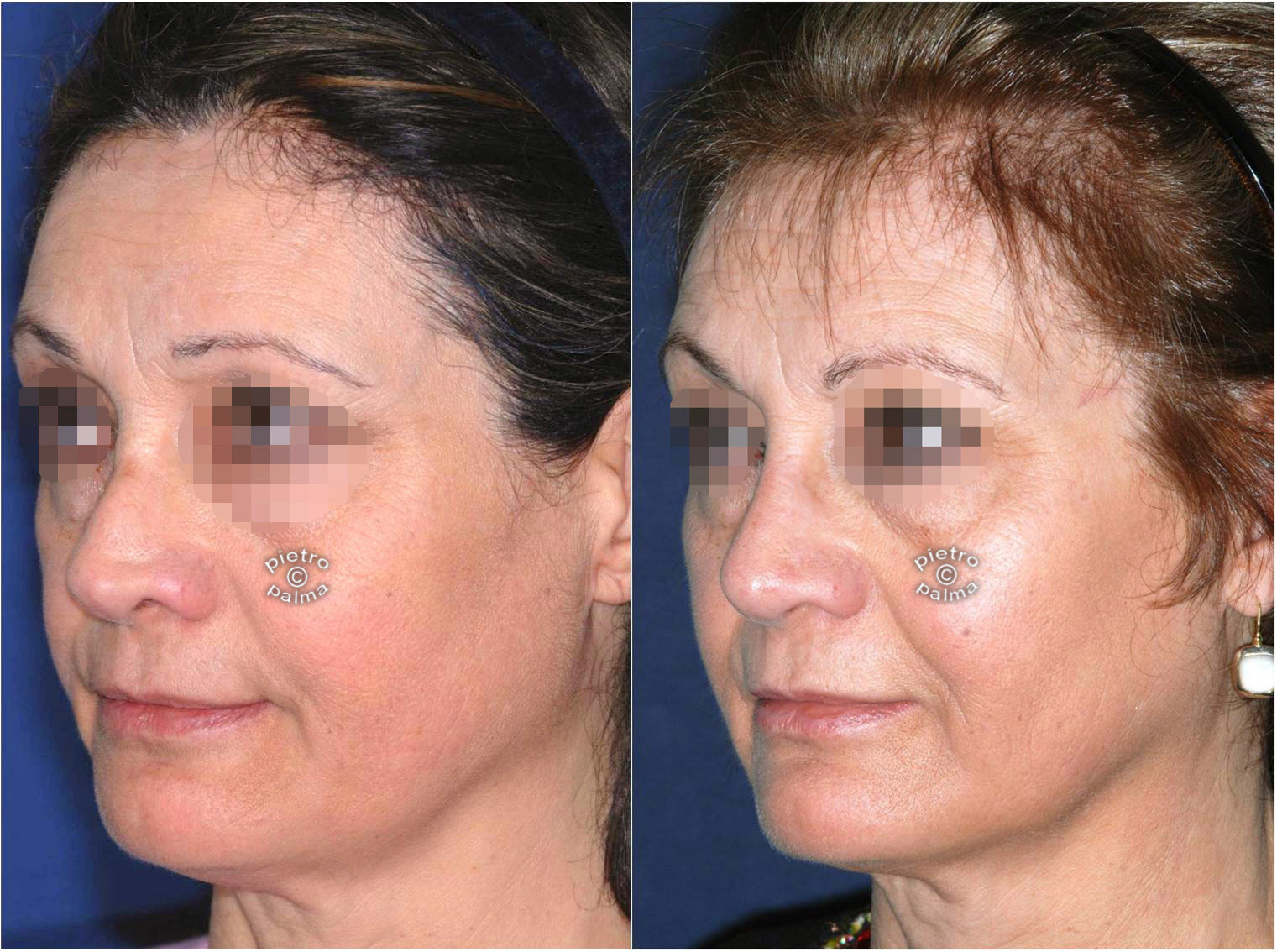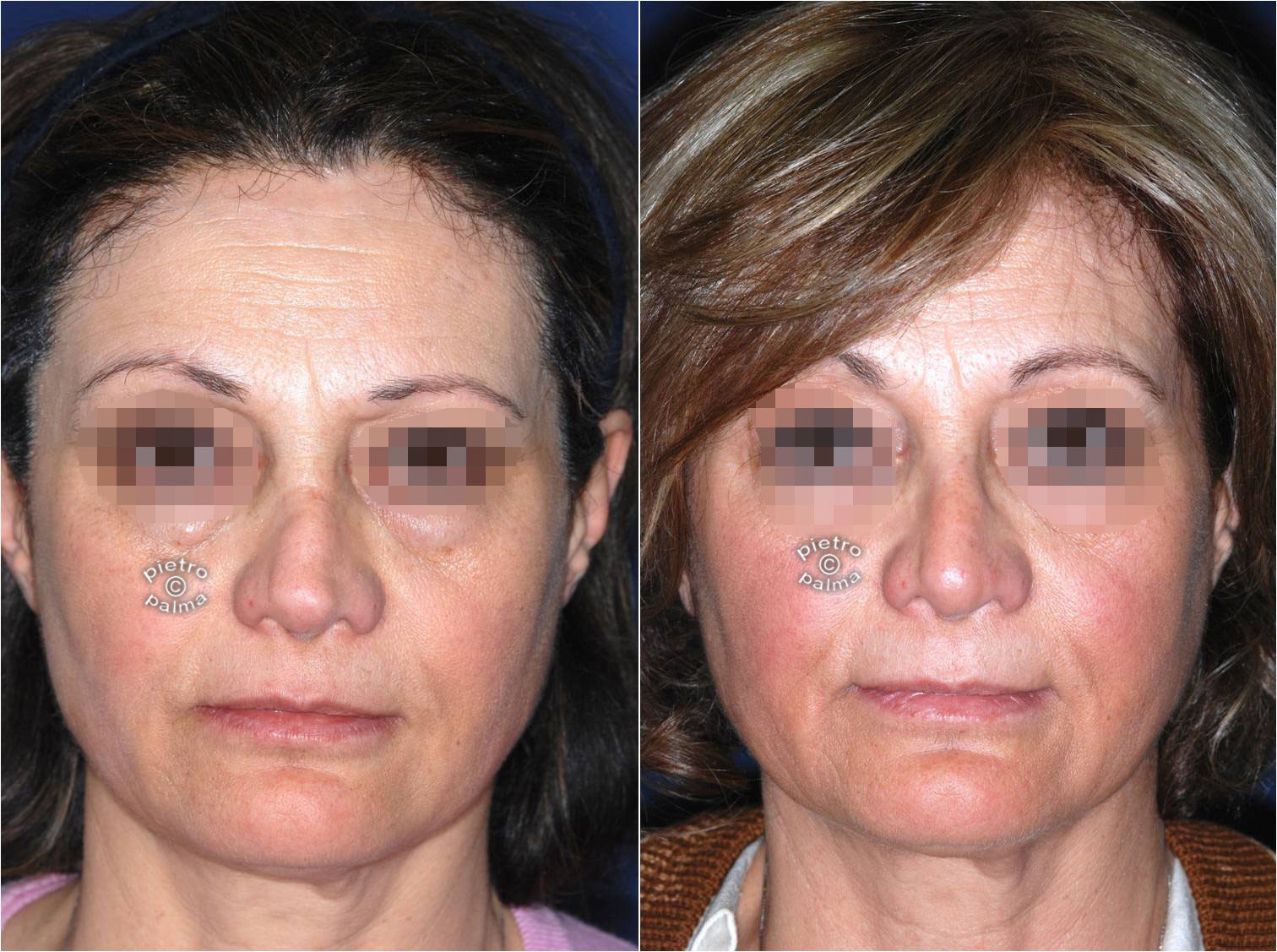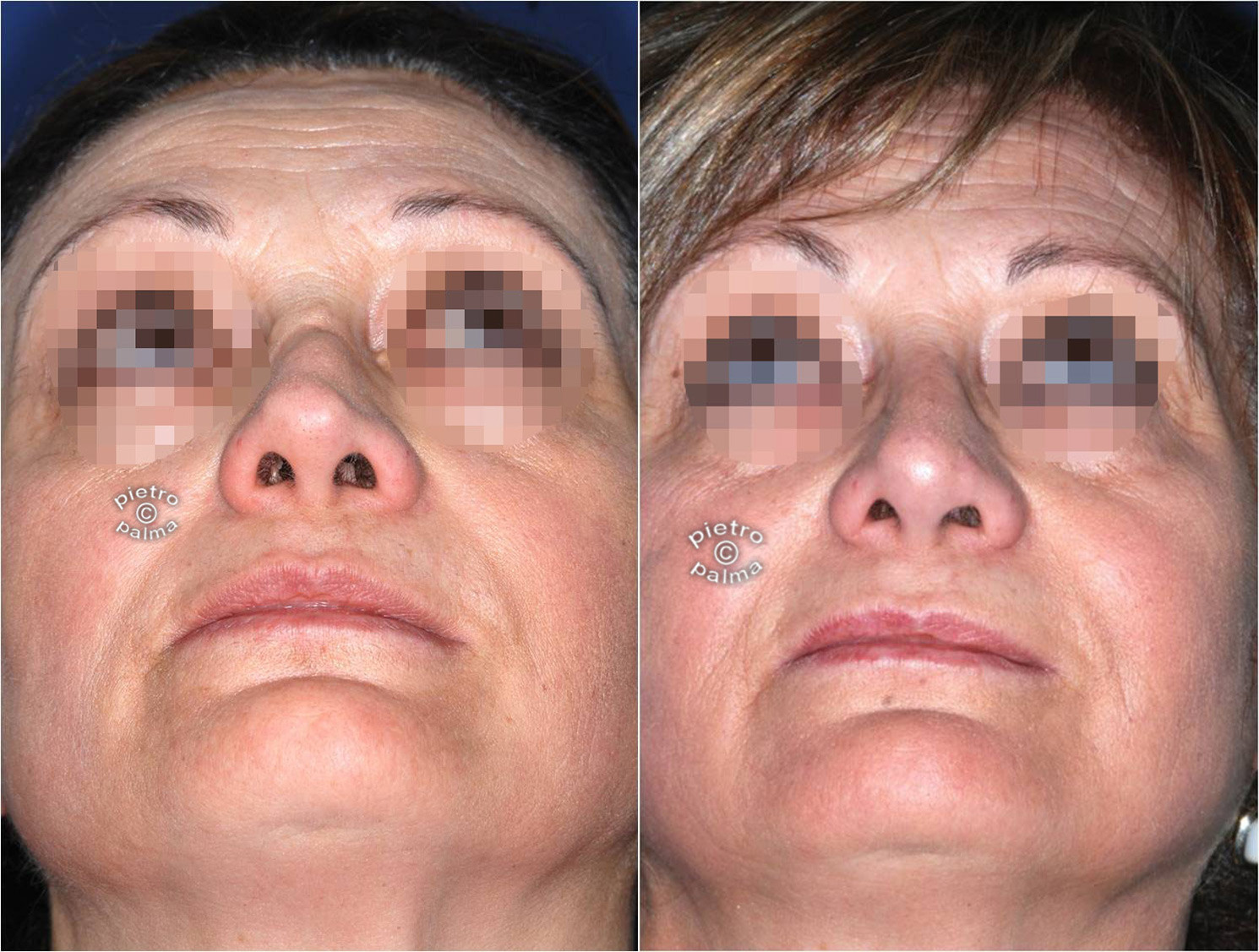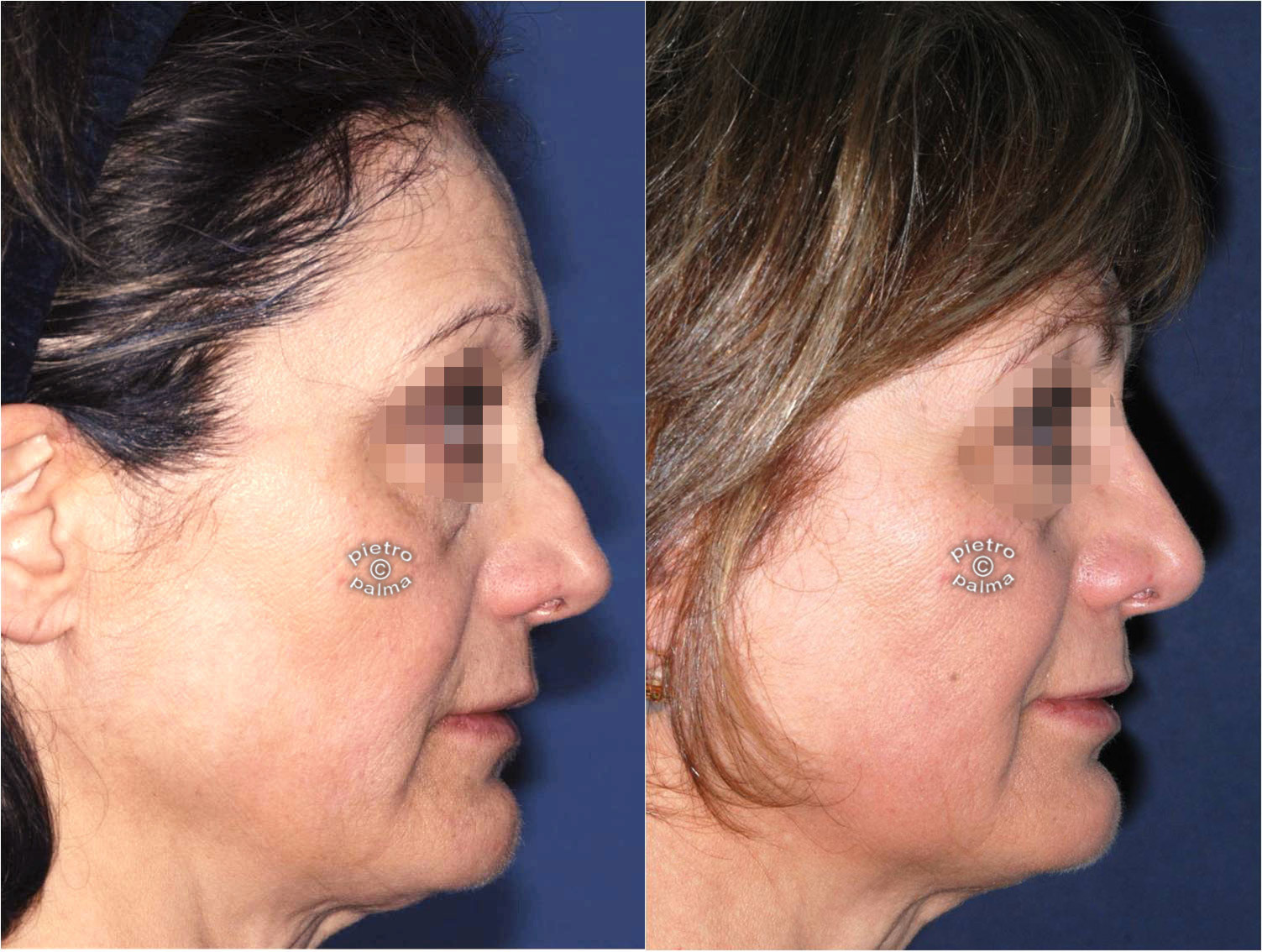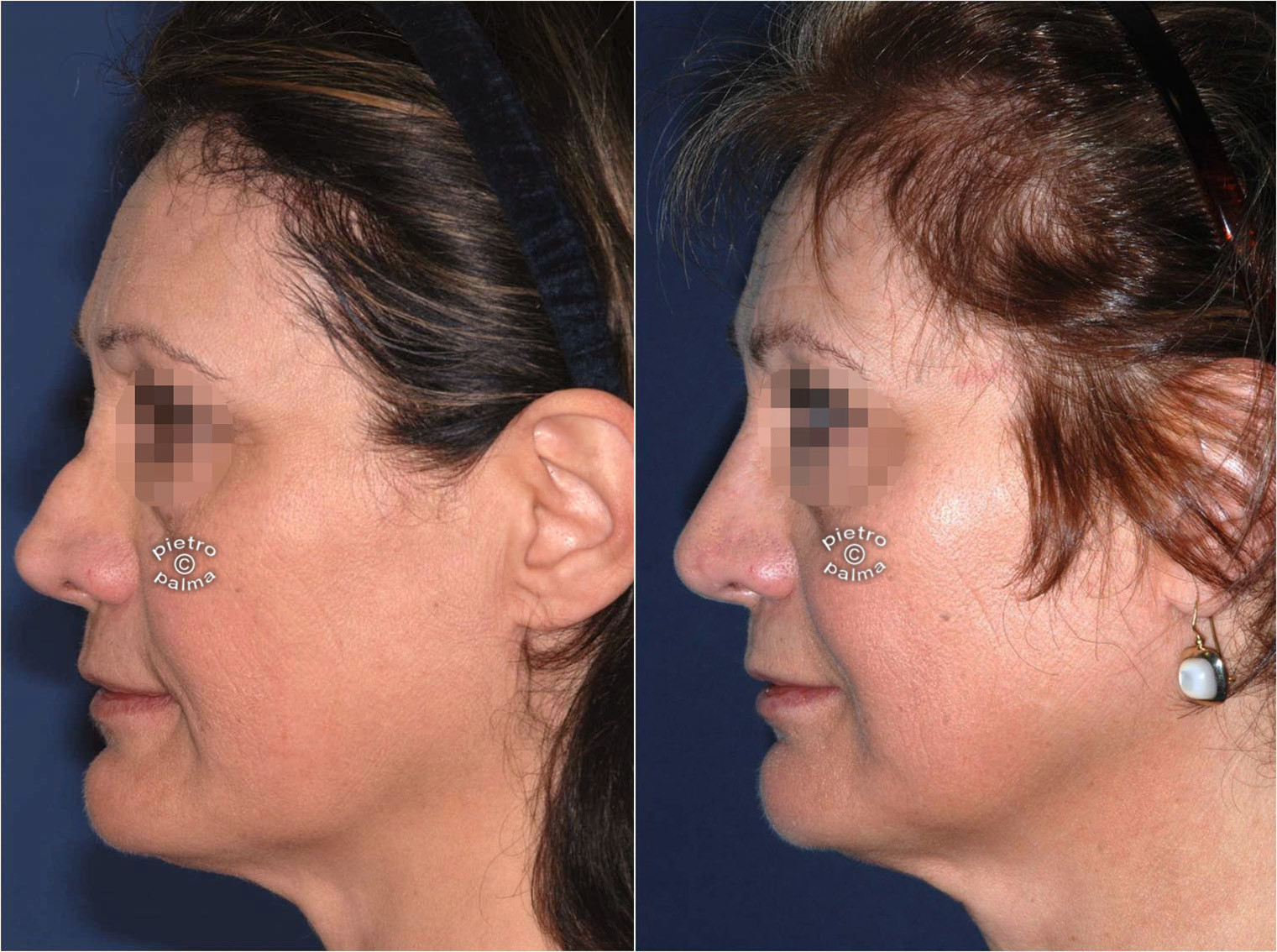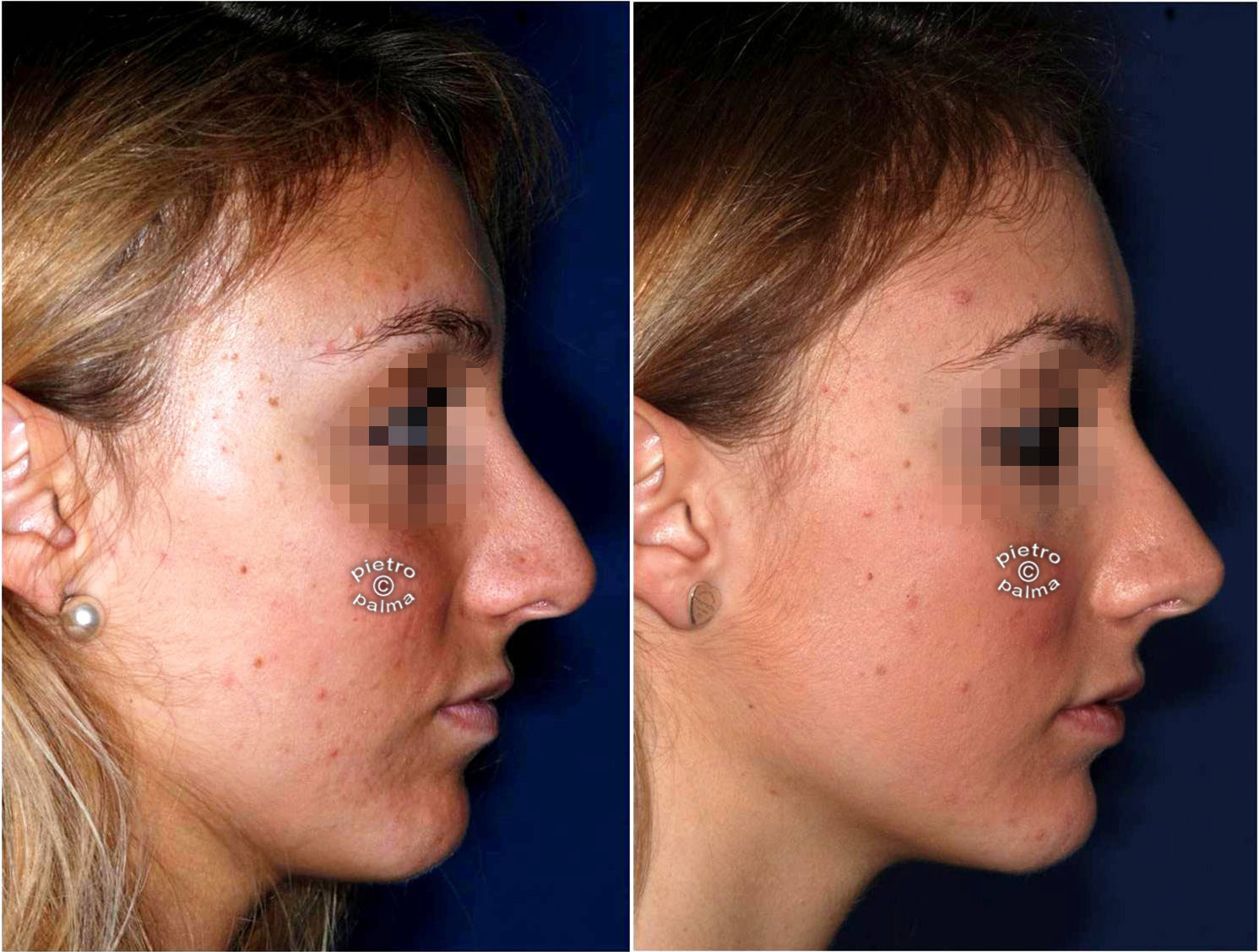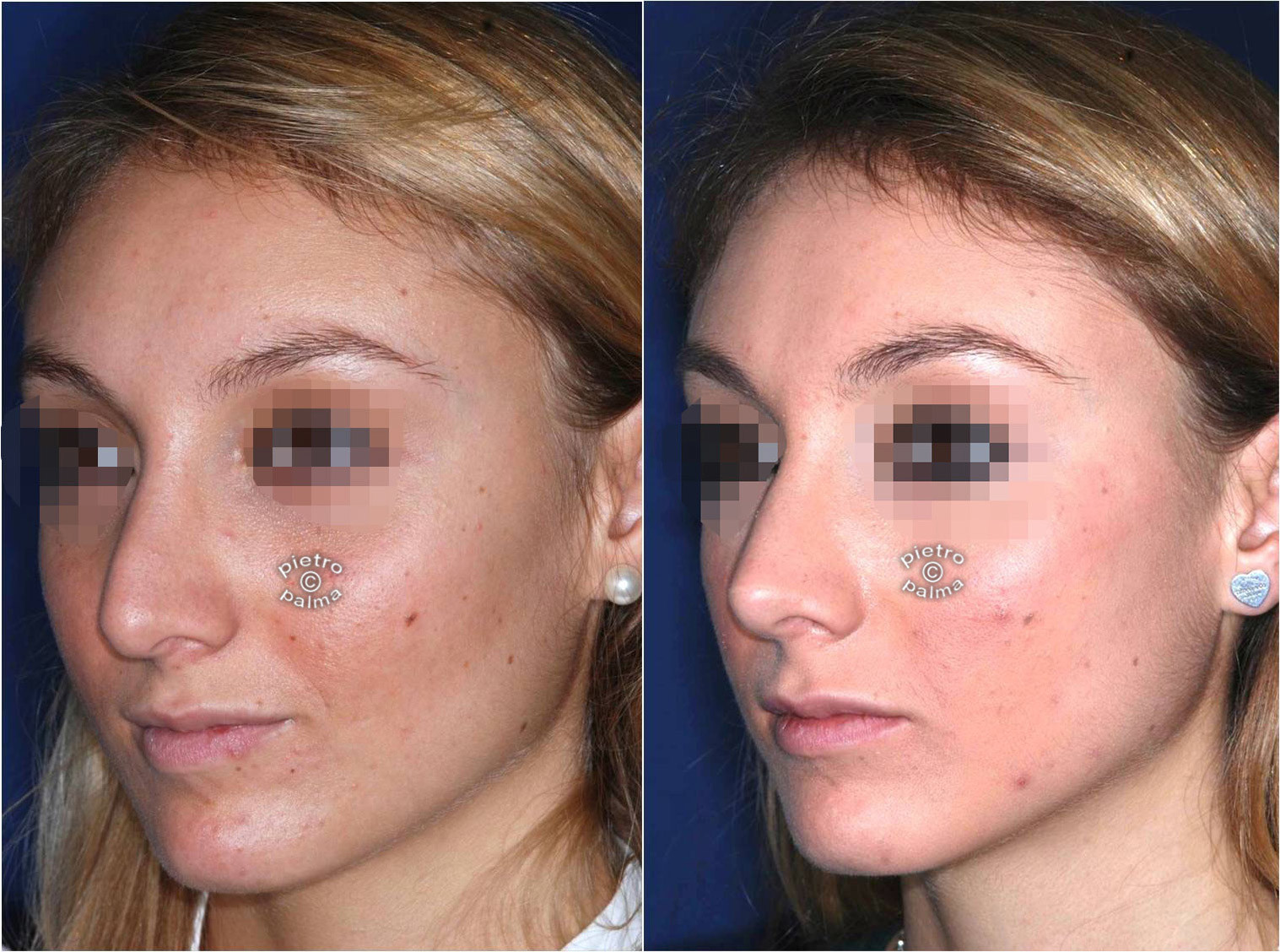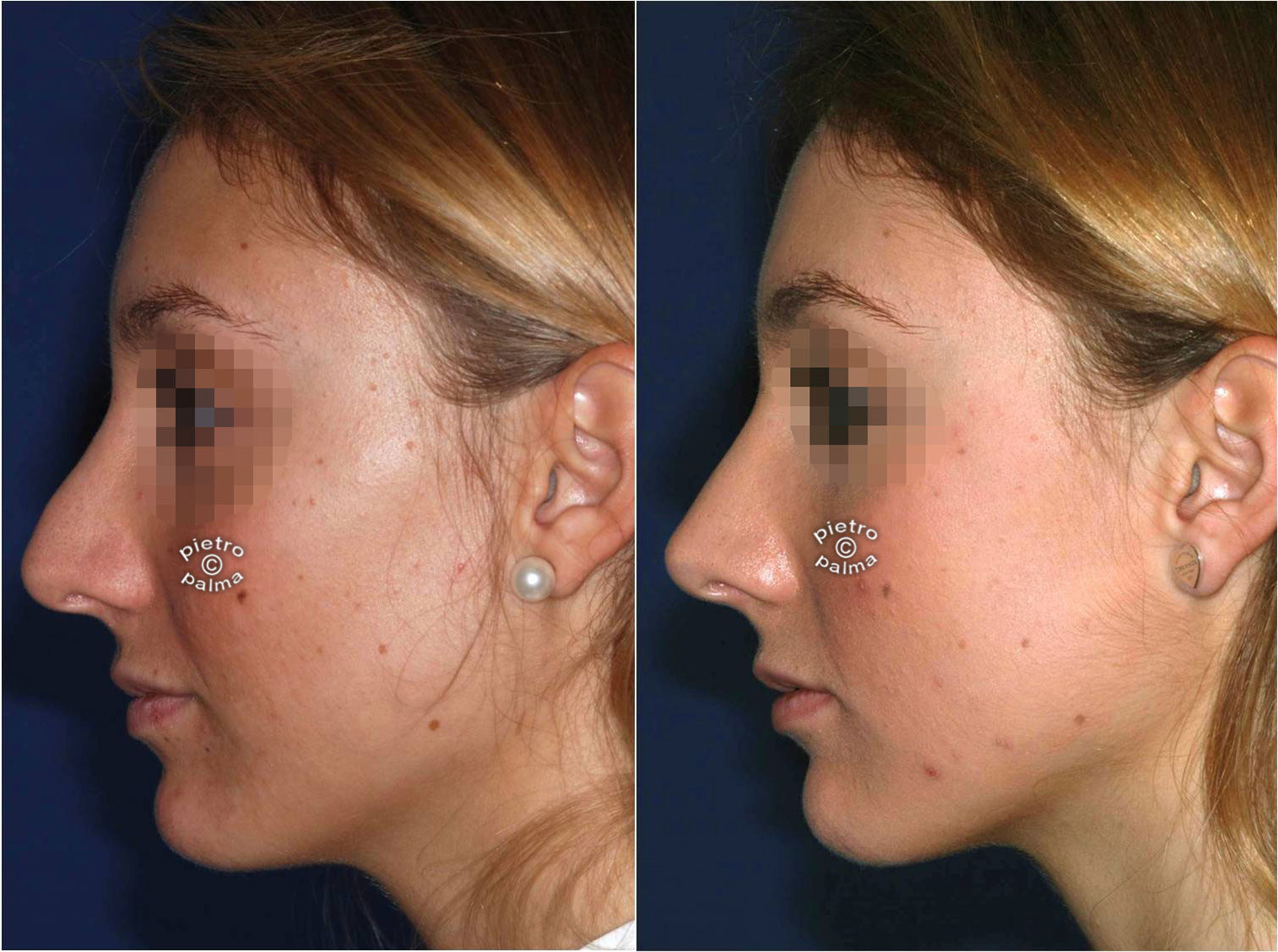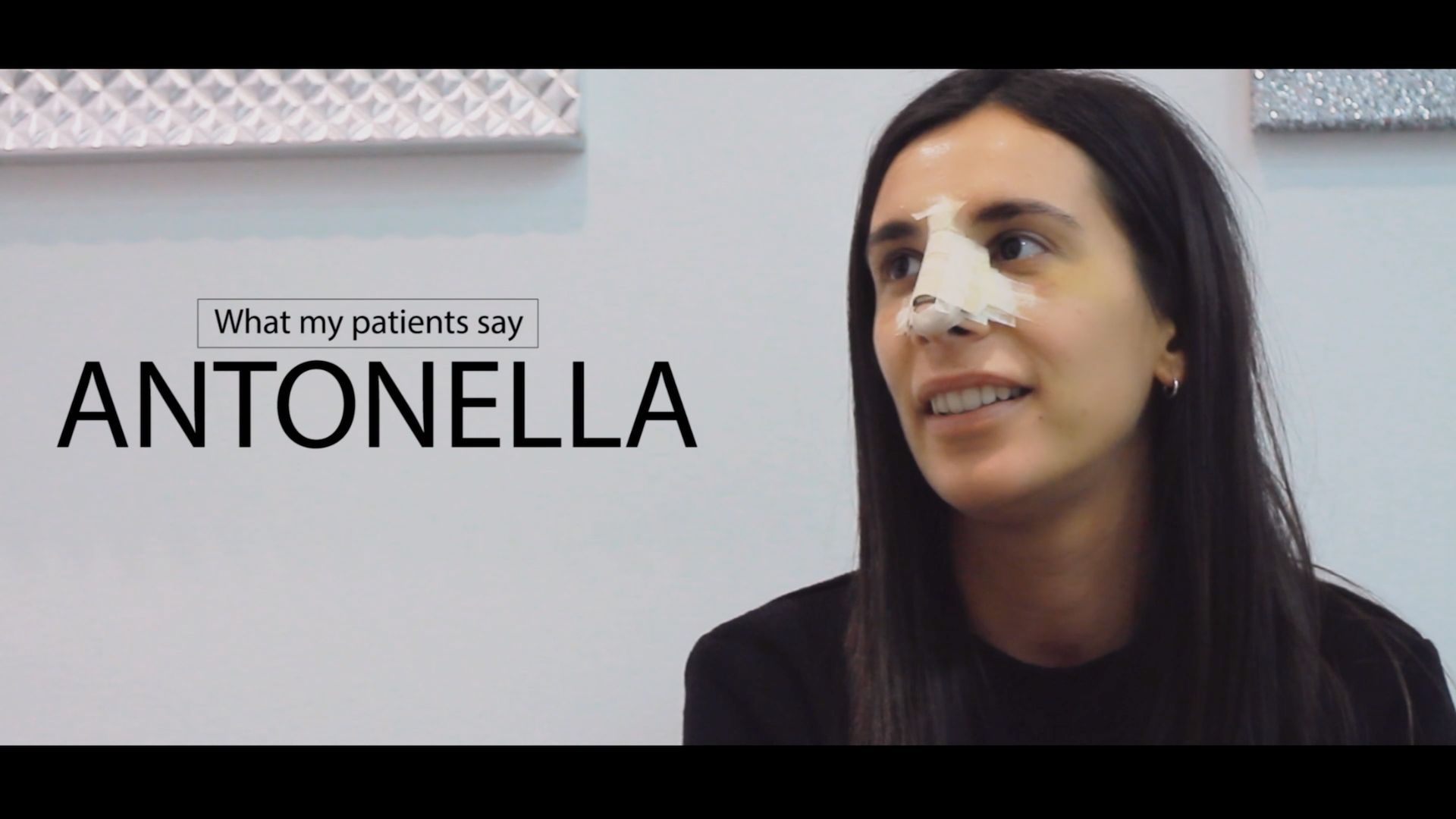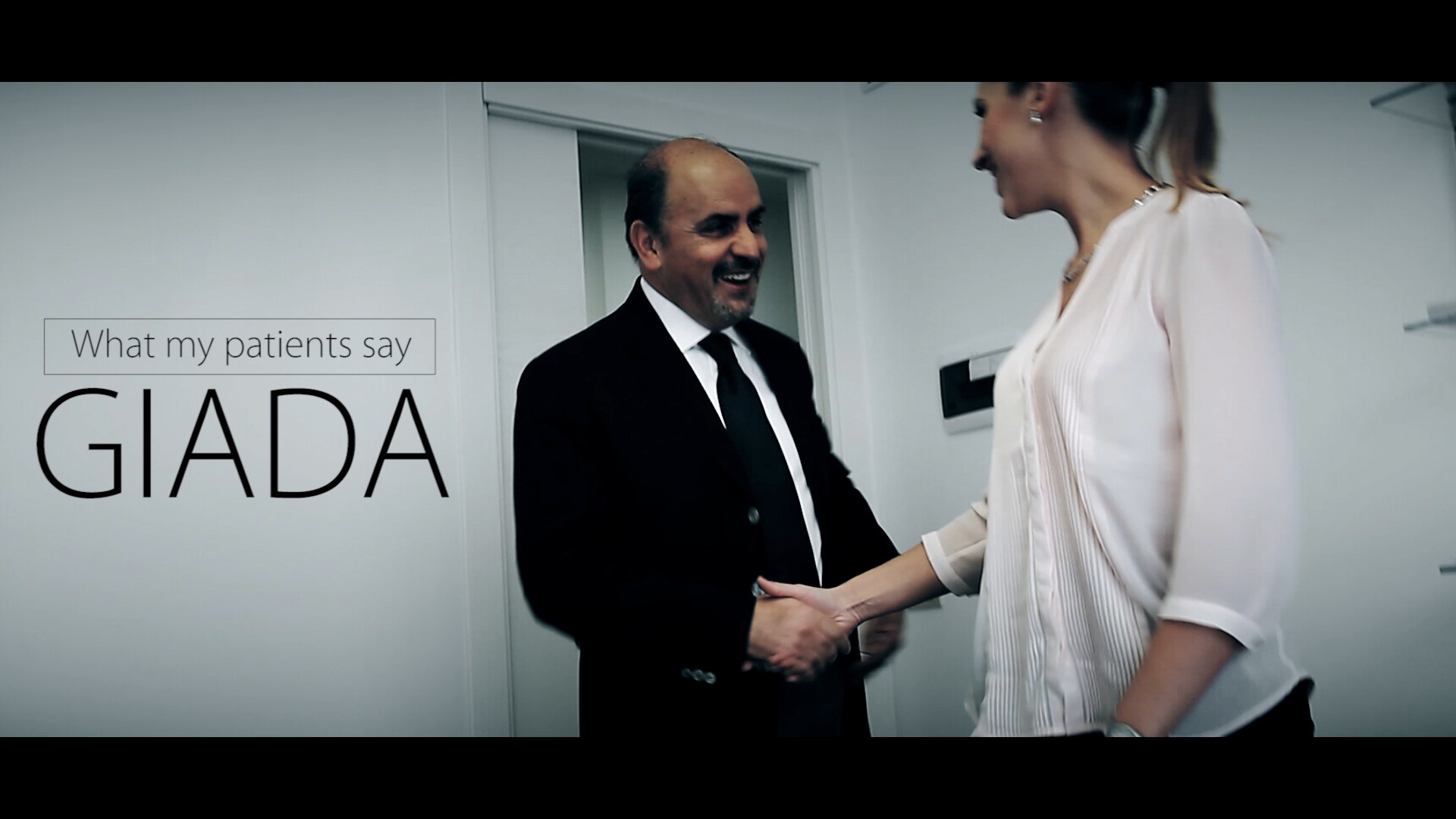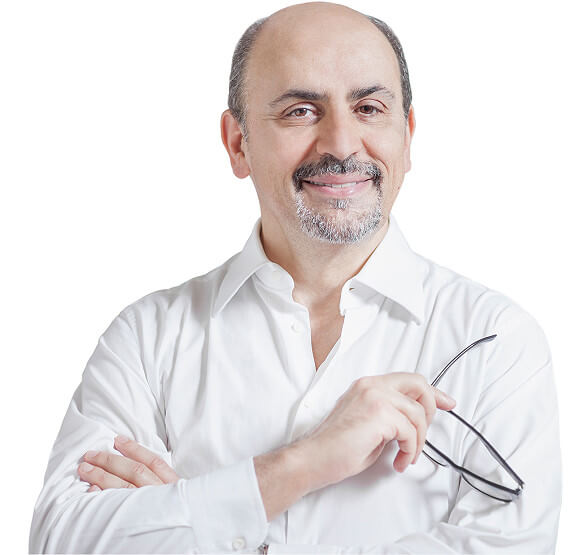The best second rhinoplasty benefits a lot from the right approach in the primary rhinoplasty
A conservative, non-destructing approach in primary rhinoplasty, secured by the minimally invasive techniques, generally leads to a much more predictable final result. To some extend, it “simplifies” also a possible revision nose job by providing a greater room for maneuver, safety and success.
However, due to inexperience or, in opposite, excessive overconfidence, the surgeon sometimes:
- accepts incongruous, unrealistic, or even “risky” requests from patients such as a desire of a particular profile line which in incompatible with the present anatomical structures (ex., very narrow tip, too low dorsum, too much overrotated tip, and so on);
- underestimates the importance of a thorough and accurate preoperative analysis;
- neglects the patient’s anatomy and nasal structures, which create the conditions of numerous visible defects in a long term;
- uses cartilaginous grafts even when not strictly necessary (i.e., when the osteocartilaginous framework has evident defects of support).
In all these cases the patient may need a revision expert to correct aesthetic defects such as a “surgical nose” stigma, the collapse of the nostrils or dorsal structures, discrepancies or asymmetries and even major functional problems.
Nose job revisions for defects related to the healing process
Nasal surgery is a complex art, and as such it requires a long, in-depth experience and a complete dedication of a surgeon. However, even the most skilled, experienced and competent surgeons can have dissatisfactory or imperfect results. These unfavorable events mainly occur during the healing process – an important and not completely predictable variable of rhinoplasty.
- among the healing problems, hypertrophic visible scars can occur at the ste of the external columellar incision after open rhinoplasty
- the so-called fibrous Polly tip, an unsightly build-up of fibrous scar tissue just above the nasal tip, is another common postsurgical defect. These tenacious subcutaneous thickenings can occur at the supratip area producing so-called polly beak of supratip deformity.
In these cases, an accurate and regular post-operative check-up allows to intervene promptly in these cases. Treatments like micro-infiltrations of corticosteroids can give perfect results. Retouching, when required, can be done with a minimally invasive outpatient surgery under local anesthesia. Same procedure could be applied to correct minimal dorsum imperfections, local subcutaneous scar thickening, small loss of projection and rotation of the tip – just to name the most frequent causes.
Super-specialized surgeon for your revision rhinoplasty
What to do if you are not completely satisfied with your appearance or, even worse, if your respiratory function is compromised after nasal surgery? You can go back to the the surgeon who operated on you and ask for a nose job revision. Or you can contact an expert in revision rhinoplasties. Rhino- and septoplasty are operations of considerable complexity, requiring the skills of a super-specialized surgeon with decades of experience, expertise and specific skills in nasal surgery.
Revision rhinoplasty requires even more advanced surgical skills, ranging from the ability to identify and interpret the defect in the preoperative analysis, to the selection of the most appropriate operative technique. Precision of the surgical maneuvers is a must Surgery should be performed in a reasonable operating time to minimize the possible risks the long-time operation (7-8 hours) can lead to. These kind of surgical risks could be justified in much more complex surgery, complex surgery such as cardiovascular surgery, neurosurgery, organ transplantation, complex multi steps oncological operations.
Each secondary (and each following) rhinoseptoplasty is a unique, talor-made to the needs of each individual patient surgery that demands all the attention and dexterity of the most expert surgeon. If you are thinking about reshaping of your nose, the best advice we can give you is to carefully choose whom to contact for the first in-depth evaluation. If this is true for the primary rhinoplasty, it is even more valuable when we come to the question of the revision surgery. The inspiring criterion is the pursue of the perfect synthesis between minimum invasiveness and maximum effectiveness.
Revision rhinoplasty expert in Milan
“Who is the best surgeon for a secondary rhinoplasty in Milan?” is a frequently asked question without a single right answer. However, absolutely right is that Dr. Palma specializes exclusively on the nasal surgery. In course of almost thirty years of surgical experience, Dr. Palma and his team have faced a wide range of aesthetic and functional problems of varying complexity.
The revisions place the surgeon in front of serious structural alterations both of the bone-cartilage skeleton and of the external and/or internal nose. These technically highly complex reconstructions create extreme situations that require the use of grafting material of the same patient harvested from the different donor sites apart the nose (ear, ribs). Dr. Palma and his team created a detailed tailor-made approach they apply in each case, highlighting the pros and cons of every therapeutic choice, and then discussing it in detail with the patient.
Do you need more information on secondary/tertiary rhinoplasty? Are you willing to find out whether you are a potential candidate for a revision surgery? Do not hesitate to contact us and schedule an appointment with your nose job revision surgeon in Milan.


